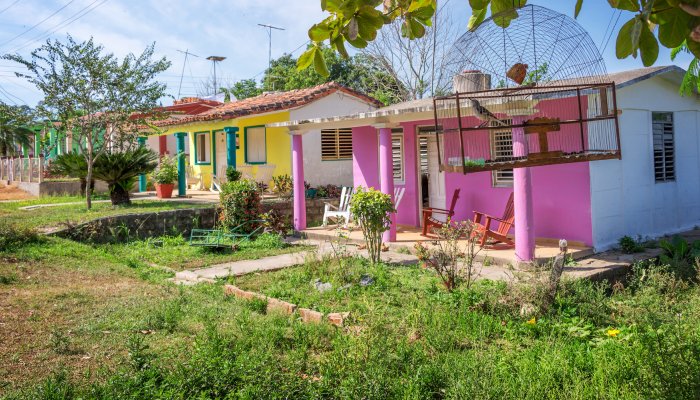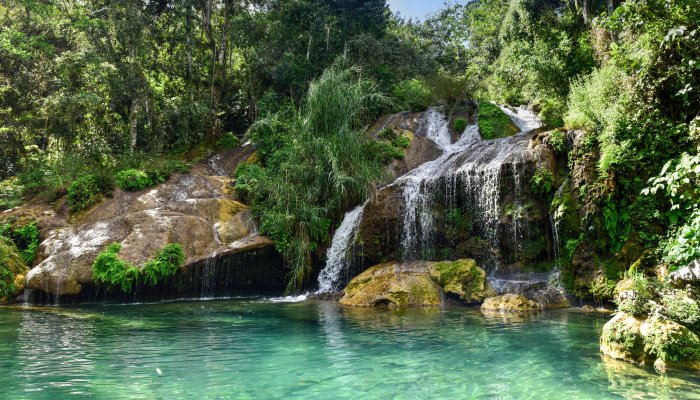Cuba's UNESCO Treasures: Exploring the World Heritage Sites
Located where the Caribbean Sea, the Gulf of Mexico, and the Atlantic Ocean meet, Cuba is a destination like no other. Its unique culture reflects influences from the Taino Ciboney peoples and Spanish colonists, as well as the enslaved Africans brought to work the sugar and coffee plantations.
Cuba is an endlessly fascinating place to explore and has been recognized by UNESCO with the designation of nine World Heritage Sites. These have been selected for their “outstanding universal value to humanity” and include biologically significant national parks, culturally important rural landscapes, and historic cities brimming with beautiful buildings.
In this article, we’ll introduce each of Cuba’s UNESCO World Heritage Sites and what makes them so special.
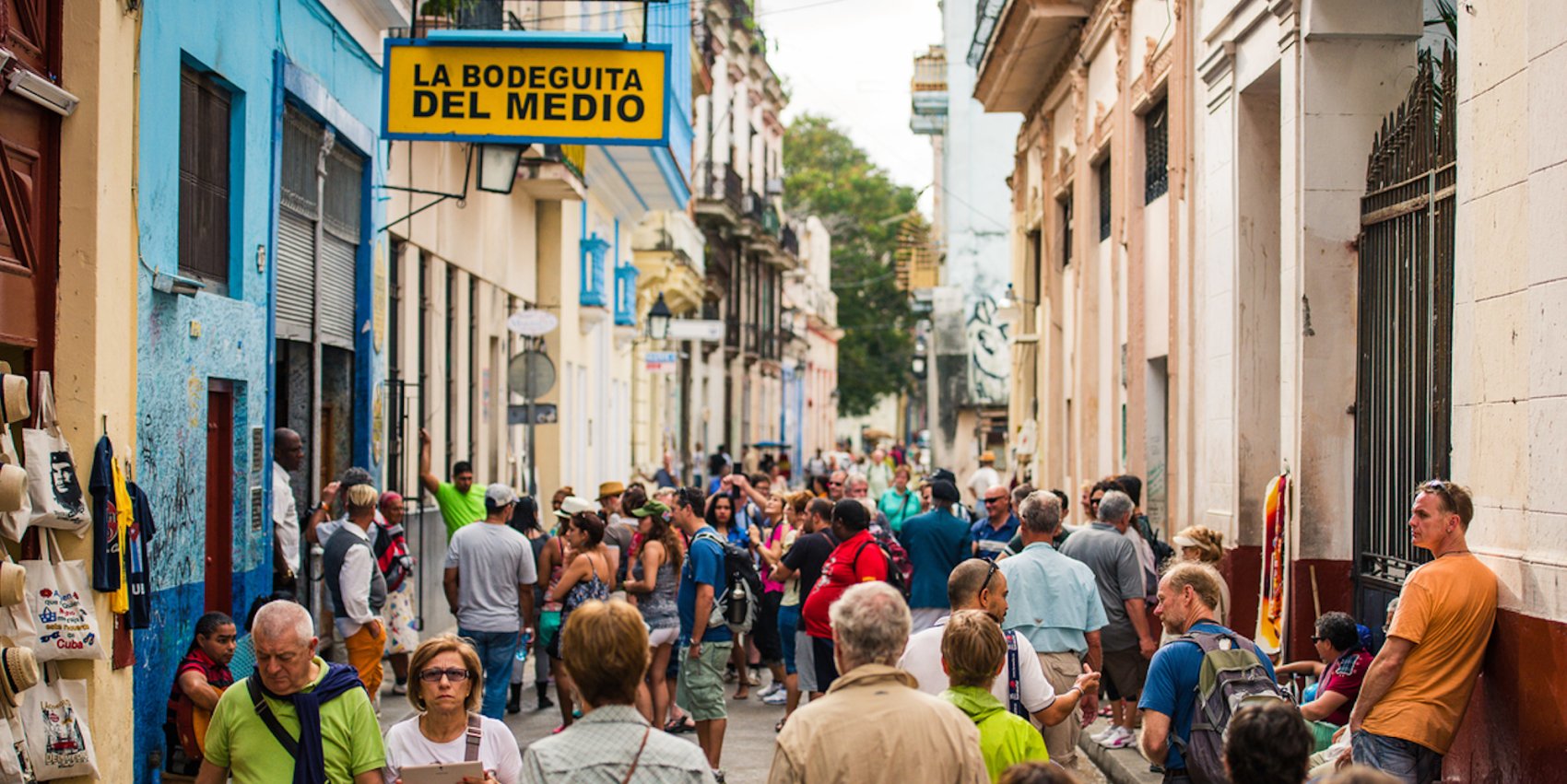
Old Havana
Located at the heart of the Cuban capital, Old Havana is a captivating mix of crumbling colonial buildings and breezy squares, which have collectively been designated as a UNESCO World Heritage Site since 1982. The area’s enchanting architecture combines Baroque residences and Neoclassical monuments, many of which feature beautiful arcades, wrought-iron balconies, and interior courtyards.
Many of our Cuba tours start and/or end in Havana and we highly recommend that guests add an extra day or two to discover the city’s UNESCO-listed historic core. Wander through the 18th-century Plaza de la Catedral and visit the star-shaped Castillo de la Real Fuerza de La Habana before people-watching from one of the bars that fringe Plaza Vieja. Beautifully restored is Calle Mercaderes, a car-free, cobblestone street with several fine museums and independent stores.
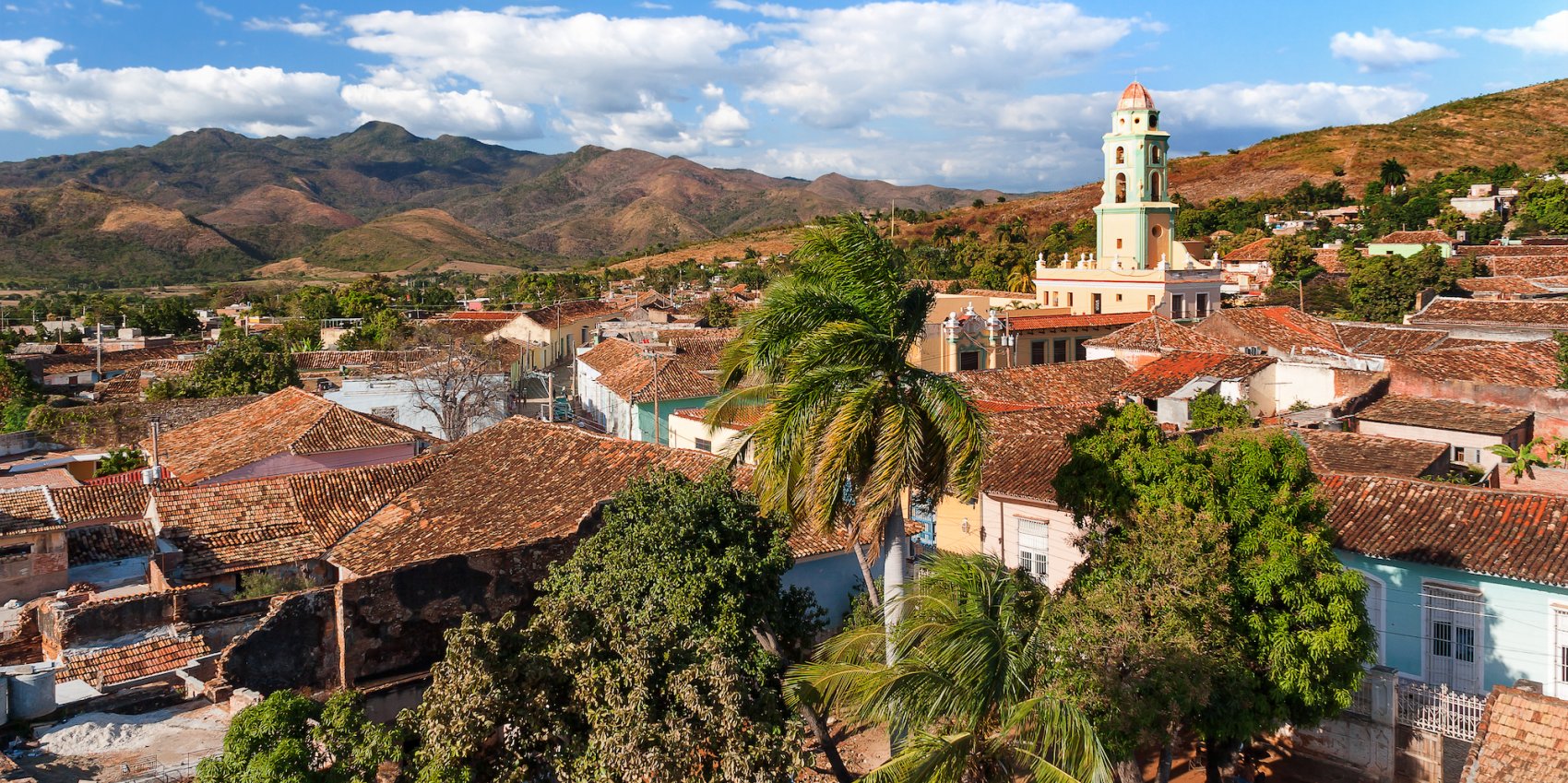
Trinidad and the Valley of the Sugar Mills
Beyond the capital, one of Cuba’s most beguiling destinations is Trinidad, which was founded in the early 16th century in honor of the Holy Trinity. Its cobblestone streets, breezy plazas, and grand colonial buildings are now designated as a UNESCO World Heritage, with a combination of Andalusian, Moorish, and Neoclassical architectural styles represented.
Many of Trinidad’s most impressive landmarks date from the 18th and 19th centuries when the town flourished on the back of the sugar trade. In the nearby Valley of the Sugar Mills, you’ll find a collection of former sugar cane mills, plantation houses, and military barracks associated with the industry. Not only are they a living testimony of the Caribbean sugar industry but reminders of the associated slave trade.
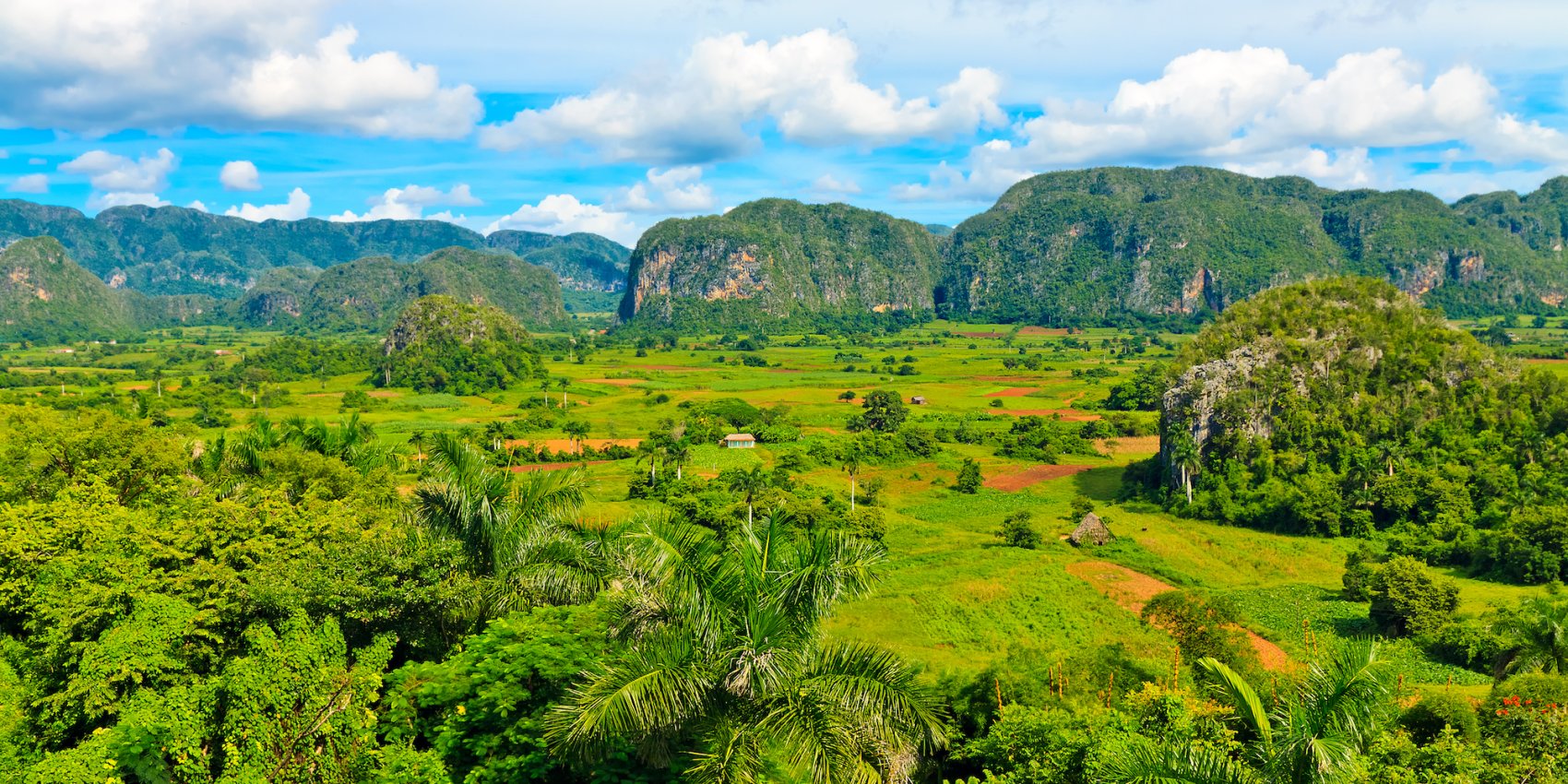
Viñales Valley
Framed by the Sierra de los Organos, the Viñales Valley is a majestic destination that’s renowned for its limestone outcrops, traditional farms, and tobacco plantations. It has been designated as a UNESCO World Heritage Site due to its outstanding karst landscape and the role it has played in Cuban agriculture. Traditional methods are still the norm here, both in tobacco cultivation and stock rearing.
The Viñales Valley is ideally explored by bicycle, allowing you to soak up the scenery as it slowly rolls by. Walking trails wind between mogotes that rise abruptly from the plains, together with simple farmhouses constructed using locally sourced materials. On tours through Viñales, you can admire the colonial wooden storefronts that line the main street, go behind-the-scenes at a tobacco farm, and learn about the fusion of indigenous, Spanish, and African traditions in the local culture.
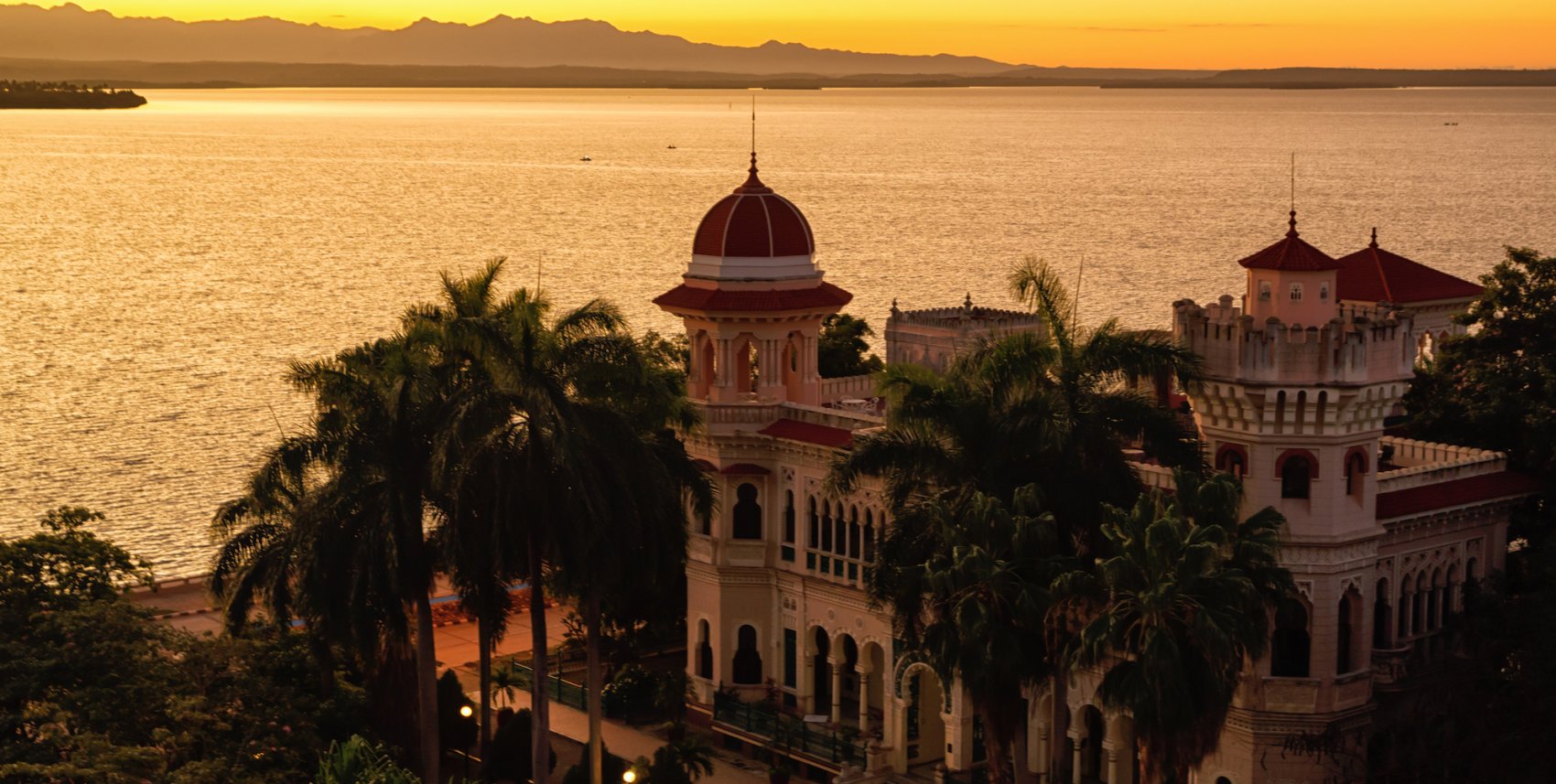
Historic Centre of Cienfuegos
Founded in 1819 on the coast of south-central Cuba, Cienfuegos was originally settled by French-speaking people from Bordeaux and Louisiana. As a result, the city developed architecturally and culturally with a distinctly French flavor, and thrived as a hub for the surrounding sugar cane, tobacco, and coffee estates.
Today, the historic center of Cienfuegos is designated as a UNESCO World Heritage Site and is an enchanting spot to wonder. Of particular note are Parque Jose Martí and the Palacio del Gobierno, as well as the Museo de las Artes Palacio Ferrer. Stop to admire the statue of legendary Cuban musician Benny Moré along the Paseo del Prado before soaking up the views from the waterfront Malecón.
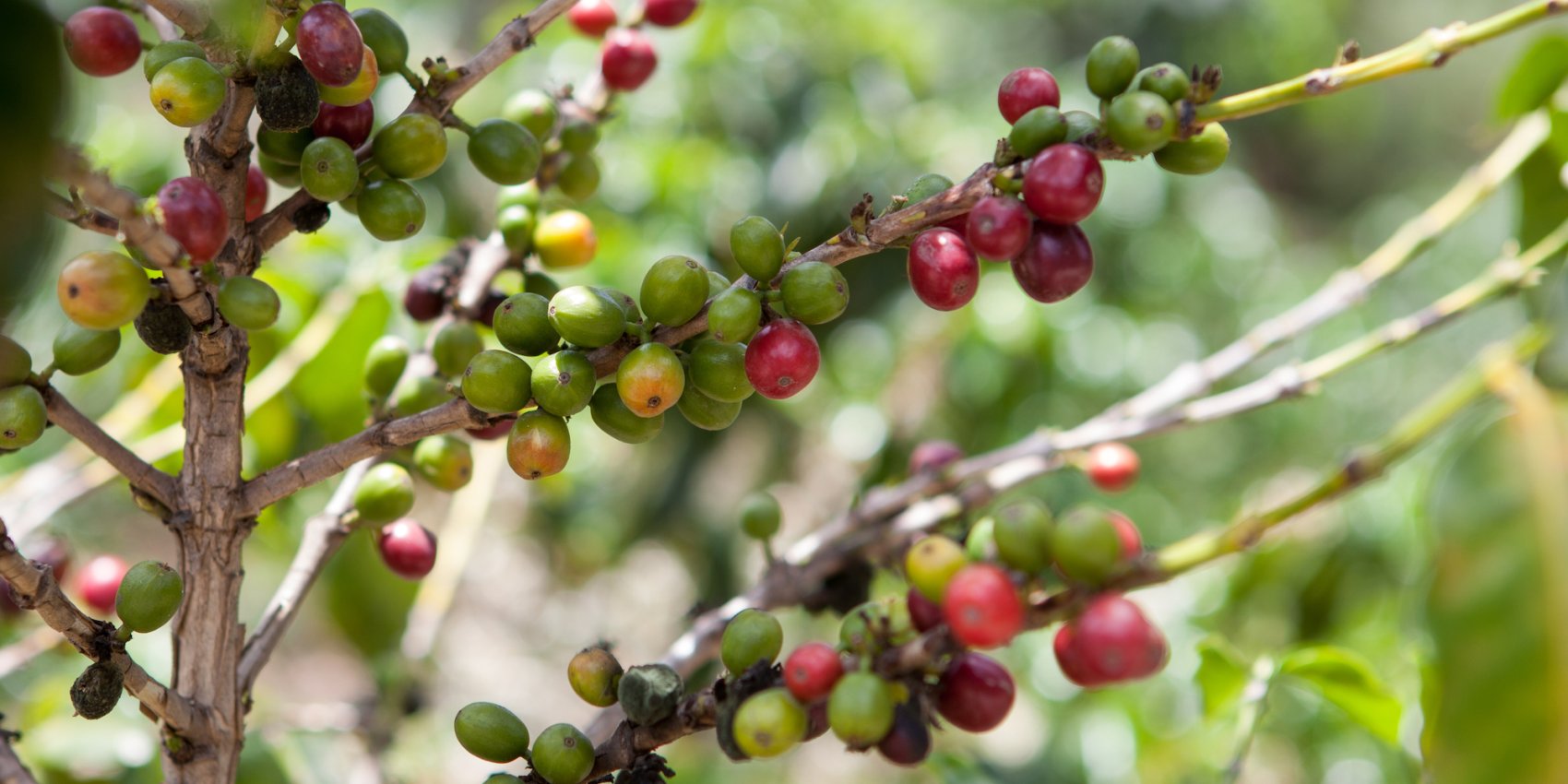
Landscape of the First Coffee Plantation
Nestled in the foothills of the Sierra Maestra is an archaeological landscape that has played a significant role in Cuba’s history of coffee cultivation. It has been designated as a UNESCO World Heritage Site for its importance to the economic, social, and technological history of the region and the challenges overcome by coffee farmers working in such difficult terrain.
Dotting the area are the remains of coffee plantations once owned by French and French-Haitian colonists, and worked by African and Creole slaves. The result of these 19th-century intercultural minglings can be seen in the food, music, architecture, and religion of the region. In addition to the ruins of more than 170 cafetales, the UNESCO designation includes the associated irrigation and transportation infrastructure.
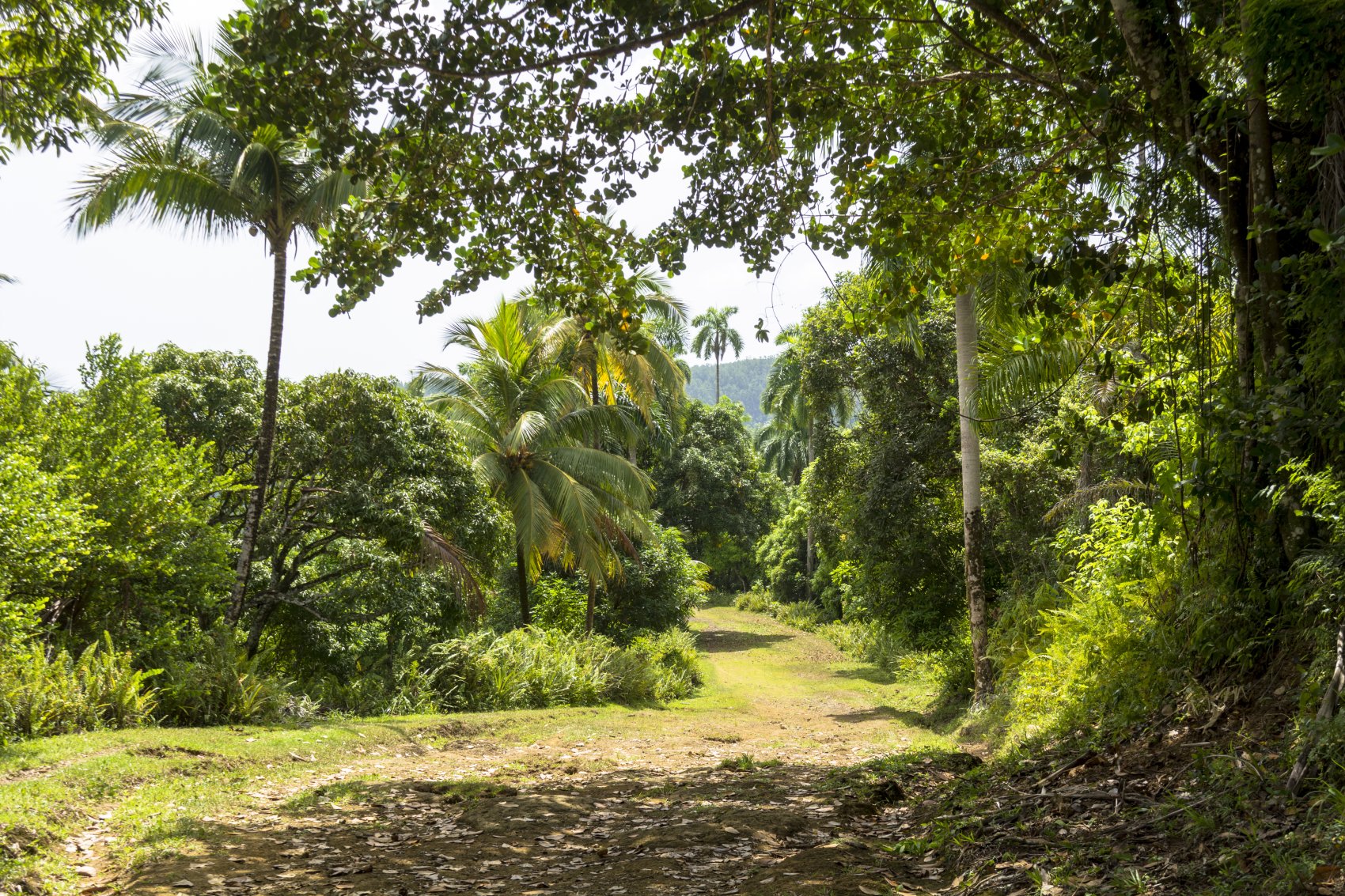
Alejandro de Humboldt National Park
Spanning the provinces of Guantanamo and Holguín, Alejandro de Humboldt National Park is a rugged coastal landscape that’s renowned for its biological richness. Due to its complex geological history and varied topography, a diversity of tropical ecosystems have been able to flourish here and the level of endemism is high.
Alejandro de Humboldt National Park is named after the German naturalist-explorer, who visited the area in 1800 and recognized its uniqueness. In 2001, it was described by UNESCO as “one of the most biologically diverse tropical island sites on earth” and designated as a World Heritage Site. Guided tours are the best way to explore its magnificent peaks and lush valleys while learning about the flora and fauna that are found nowhere else in the world.
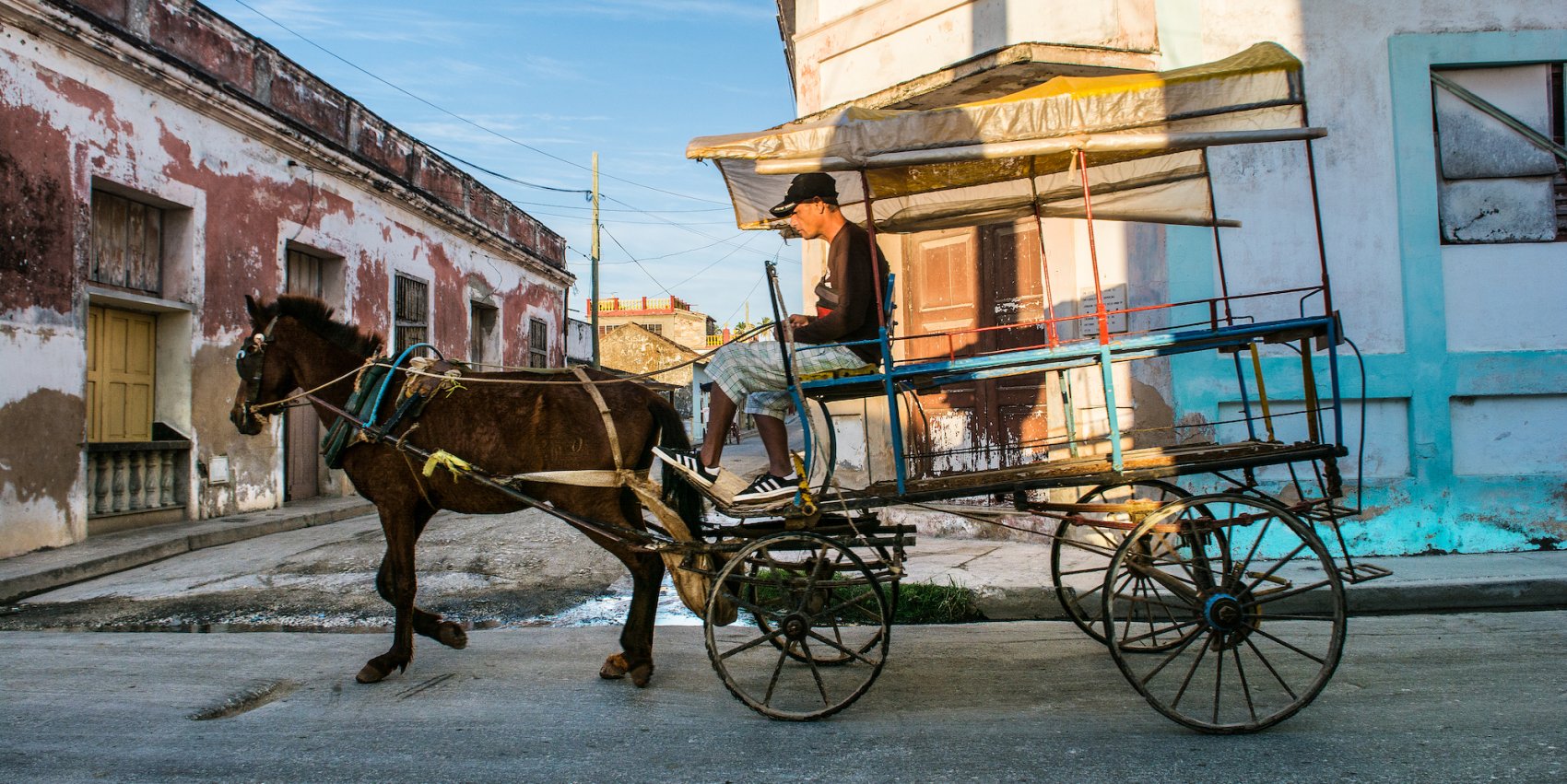
Historic Center of Camagüey
Settled in 1528, Camagüey was one of the first Cuban villages founded by the Spanish and is now the third-largest city in the country. It developed as an important hub for the cattle breeding and sugar industries, and many of its architectural gems date from the colonial period. Camagüey is particularly special for its irregular layout, with serpentine streets connecting both large and small squares in a manner that is uncommon for Latin American colonial towns.
Now designated as a UNESCO World Heritage Site, Camagüey is home to elegant Baroque churches and pastel-colored houses, as well as an abundance of artist workshops. Not to miss are the recently restored Plaza del Carmen and Parque Ignacio Agramonte where you can relax on a bench and watch the world go by. Camagüey is also home to one of Cuba’s most prestigious ballet companies, which performs at the iconic Teatro Principal.
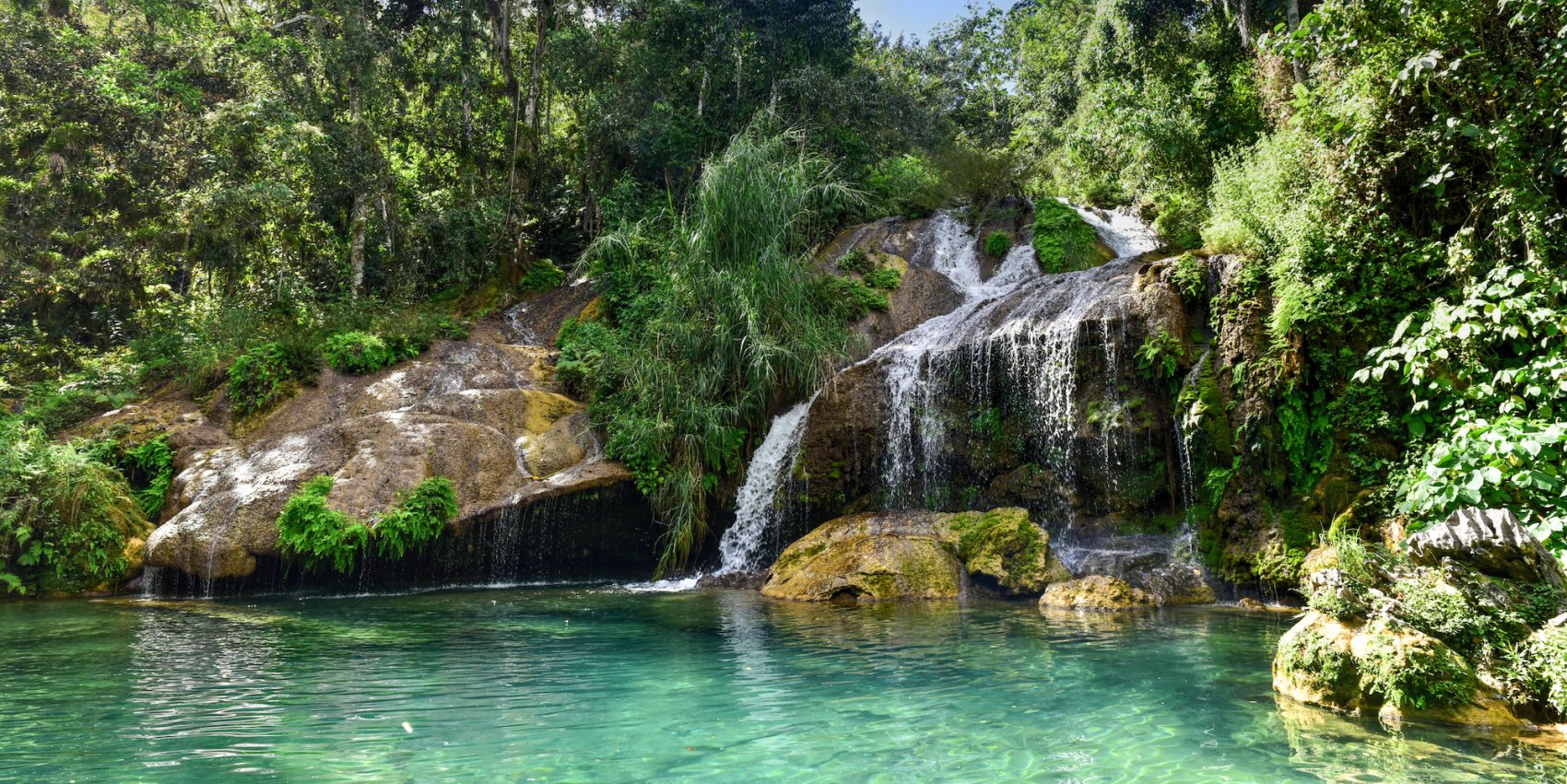
Desembarco del Granma National Park
Nestled in the southwest of Cuba, this globally significant national park is named after the landing of the yacht in which Fidel Castro, Che Guevara, and Raul Castro sailed from Mexico to Cuba in 1956. It is not only important for its links to the Cuban Revolution but its exceptional karst topography and biological diversity.
Desembarco del Granma National Park has been designated as a UNESCO World Heritage Site for its geomorphologic and physiographic features, making it worth the detour for nature-loving visitors. It encompasses spectacular marine terraces and dramatic coastal cliffs that plunge into the Atlantic waters below. In addition to picturesque waterfalls, sinkholes, and caves, the park is home to more than 250 endemic plant species.
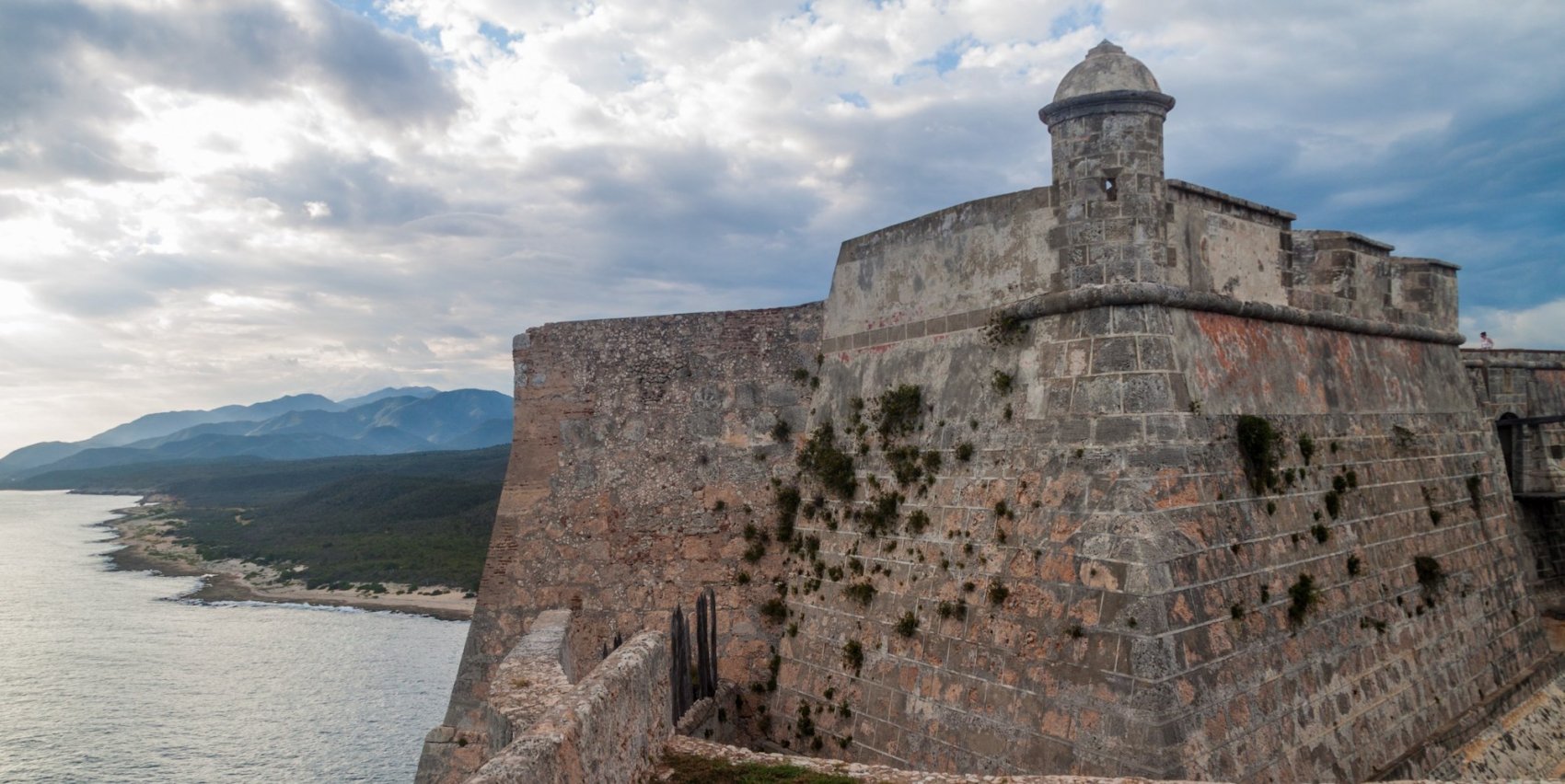
San Pedro de la Roca Castle
Dominating the coast of Santiago de Cuba is this 16th-century castle, which is considered one of the best-preserved examples of Spanish-American military architecture in the region. It was designed by the Italian engineer Juan Bautista Antonelli to protect Santiago de Cuba’s port, with a complex mix of forts, bastions, and batteries.
Now designated as a UNESCO World Heritage Site, San Pedro de la Roca Castle offers spectacular views across the coastline and the Sierra Maestra from its upper terrace. Housed within the castle is the Museo de Piratería, which offers a fascinating insight into the pirates that patrolled the Caribbean Sea in times gone by. Coincide your visit with the sunset cañonazo ceremony as costumed actors fire up one of the cannons.
While Cuba has garnered a reputation for its classic cars, cigars, and beautiful beaches, this enchanting Caribbean island offers so much more. Its UNESCO World Heritage Sites reflect its fascinating colonial history and the industries that have shaped the modern nation, as well as preserving the biological riches that can be found nowhere else on Earth.
Our Cuba tours are designed to satisfy the diverse interests of adventurous travelers, whether you’re into history, culture, or the natural world. Not only will they immerse you in everything that makes this island unique but they offer plenty of opportunities to connect with the faces of modern-day Cuba.



